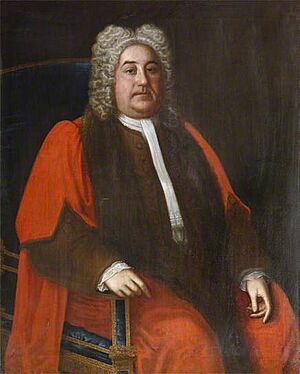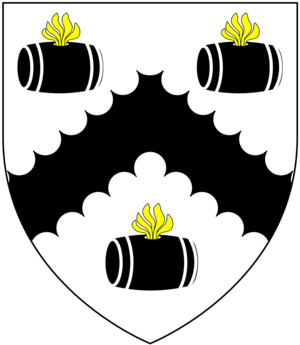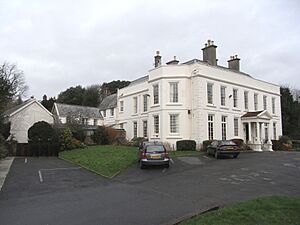Benjamin Incledon facts for kids
Benjamin Incledon (1730–1796) was a very smart English historian and family tree expert. He lived at Pilton House, Pilton, near Barnstaple in North Devon. He was also the Recorder of Barnstaple (a legal officer) for many years, from 1758 until he died in 1796.
Family Background
Benjamin Incledon was born in Pilton, near Barnstaple, on June 6, 1730. He was the second son of Robert Incledon (1676–1758). His father was important in Barnstaple, building Pilton House, serving as a Deputy Recorder, and being Mayor twice. Benjamin's mother was Penelope Sandford.
The Incledon family has a long history, going back to the 1100s! They came from a place called Incledon in North Devon. Later, in 1319, they bought another estate nearby called Buckland, which became their main home.
His Work and Interests
Benjamin Incledon went to Blundell's School in Tiverton. He later became a trustee for the school, helping to manage its affairs.
Because he came from a wealthy family, Benjamin spent his life studying the old families of Devonshire. He was very good at creating family trees, also known as pedigrees. Another Devon historian, Richard Polwhele, even mentioned how skilled he was at this. Benjamin's work on the "Fortescue" family tree in 1795 is still used today!
In 1792, Benjamin Incledon paid to print a book about the donations given to Blundell's School. This book was very important because it helped record the school's history. He is known as the first historian of Blundell's School. The school still remembers him for his many gifts, including pictures and important documents.
He also wrote about St. Margaret's Hospital in Pilton. From 1758 until his death, he was the Recorder of Barnstaple. He loved studying the town's old records. His lists of Barnstaple's mayors and members are still used today.
Family Life
In 1757, Benjamin Incledon married Margaret Newton (who passed away in 1803) in Tiverton. They had children, including their eldest son:
- Robert Newton Incledon (1761–1846): He married Elizabeth Beavis in 1797. Robert later sold Pilton House and moved to Yeotown House, which he rebuilt in a cool, old-fashioned style. Today, you can still see a part of his design, a small building with towers, called Ivy Lodge.
Death
Benjamin Incledon passed away in Barnstaple on August 7, 1796, after being ill for a while.
Images for kids






